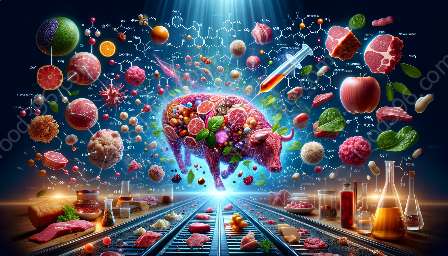Meat is a staple in the diets of people around the world, and its quality is of paramount importance. One crucial aspect of meat quality is its water-holding capacity, which has significant implications for taste, juiciness, and texture. Understanding the mechanisms and factors influencing water-holding capacity involves delving into the realms of meat chemistry and meat science.
Meat Chemistry: Unraveling the Molecular Composition
In the context of water-holding capacity, meat chemistry delves into the intricate composition of meat at a molecular level. Proteins, particularly myofibrillar proteins such as actin and myosin, play a critical role in determining the ability of meat to hold water. These proteins form a network structure within the muscle fibers, influencing the meat's capacity to retain moisture. Additionally, the presence of connective tissues, such as collagen, also influences water-holding capacity. The chemical interactions within the meat matrix, including protein denaturation and water binding, further contribute to the overall water retention capacity of meat.
The Role of Meat Science: Understanding the Physical Attributes
Meat science focuses on the physical properties and characteristics of meat, offering insights into water-holding capacity from a broader perspective. One key aspect studied in meat science is the concept of water activity, which refers to the amount of free water available for chemical reactions and microbial growth. This parameter is closely linked to water-holding capacity, as it directly influences the moisture content and stability of the meat. Furthermore, understanding the microstructure of meat, including the arrangement of muscle fibers and the distribution of fat, provides critical insights into the factors affecting water retention.
Factors Affecting Water-Holding Capacity
A multitude of factors impact the water-holding capacity of meat. The physiological state of the animal before slaughter, such as stress levels and muscle glycogen content, can affect the post-mortem changes in meat structure and the subsequent water retention capacity. Additionally, processing techniques, including aging, marination, and mechanical treatments, can influence the meat's ability to retain moisture. The level of fat content in the meat, as well as the presence of additives and binders, also contributes to water retention. Furthermore, cooking methods and temperatures play a pivotal role in determining the final water-holding capacity and sensory attributes of the meat product.
Implications for Meat Quality and Consumer Preference
The water-holding capacity of meat has substantial implications for its overall quality and consumer satisfaction. Meat with higher water-holding capacity tends to be juicier, more tender, and flavorful, enhancing the eating experience. In contrast, meat with lower water retention may exhibit dryness, toughness, and reduced succulence, detracting from its desirability. Understanding the intricacies of water-holding capacity enables producers to optimize meat quality and tailor products to meet consumer preferences.
Future Directions and Research Endeavors
As the fields of meat chemistry and meat science continue to advance, ongoing research seeks to unravel the complex mechanisms governing water-holding capacity in meat. There is a growing emphasis on exploring novel techniques to enhance water retention, such as the application of natural ingredients and innovative processing methods. Additionally, advancements in analytical technologies allow for a more detailed characterization of meat composition and microstructure, shedding light on the interplay between chemical and physical factors influencing water-holding capacity.
Conclusion
The intricate interplay between meat chemistry and meat science provides an expansive understanding of water-holding capacity in meat. By elucidating the molecular composition and physical attributes of meat, as well as the diverse factors influencing water retention, this topic cluster offers a comprehensive exploration of a crucial aspect of meat quality. The implications for meat products and consumer satisfaction underscore the significance of delving into this complex yet fascinating realm of research, with ongoing endeavors seeking to optimize water-holding capacity and elevate the overall experience of enjoying high-quality meat.

